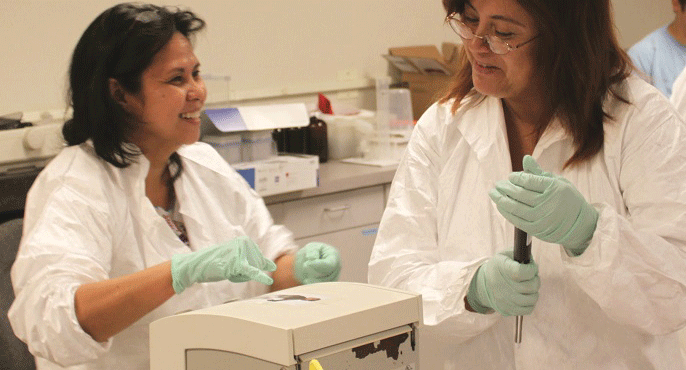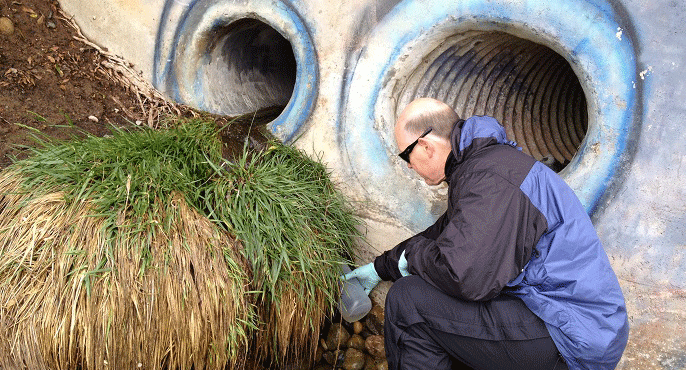One of SCCWRP’s top six accomplishments of its first 50 years
SCCWRP uses cutting-edge science to improve detection and management of waterborne microbial contamination at Southern California beaches.
SCCWRP’s top six accomplishments
The six most important, managerially relevant accomplishments of SCCWRP’s first 50 years, as identified by those who’ve helped make SCCWRP the organization it is today
Technical accomplishments
Organizational accomplishments
Advances in molecular microbiology in recent decades have paved the way for next-generation approaches to how water-quality managers detect, track, and assess health risks associated with microbial contamination at Southern California’s world-famous beaches. By vetting and transitioning the best of these methods and tools for use by the public health community, the scientific community can give beachgoers and environmental managers alike increased confidence that it is safe to play, swim and surf in the coastal ocean.
SCCWRP is an international leader in developing incrementally stronger, more effective strategies for protecting beach water quality. Since the 1990s, SCCWRP has been conducting foundational studies that illuminate where Southern California beach water quality is relatively poor, where fecal contamination is coming from, and what level of health risk is associated with exposure to this contamination. From this seminal work, water-quality managers have been able to prioritize beach sites for cleanup and remediation, as well as make long-term decisions about how to manage persistent fecal contamination signals, particularly during wet weather.

SCCWRP also has provided managers with the latest, most effective approaches for detecting and measuring fecal contamination. By bringing together leading microbiologists from around the world to compare and vet emerging methods and technologies, SCCWRP has helped forge international consensus on the most efficient, reliable ways to protect beach water quality. Some of these approaches – like a SCCWRP-led investigation into the most effective approach to track beach fecal contamination signals to their upstream origin points – have been adopted by California as definitive guidance for managers statewide.
SCCWRP’s beach water-quality work also has prompted member agencies and others to invest in SCCWRP-vetted technologies for their own laboratories, including quantitative polymerase chain reaction (qPCR) and droplet digital PCR for routine water-quality testing. Southern California’s water-quality management community also has coalesced around use of a SCCWRP vetted genetic marker known as HF183 for tracking human fecal contamination across the region’s waterways.
